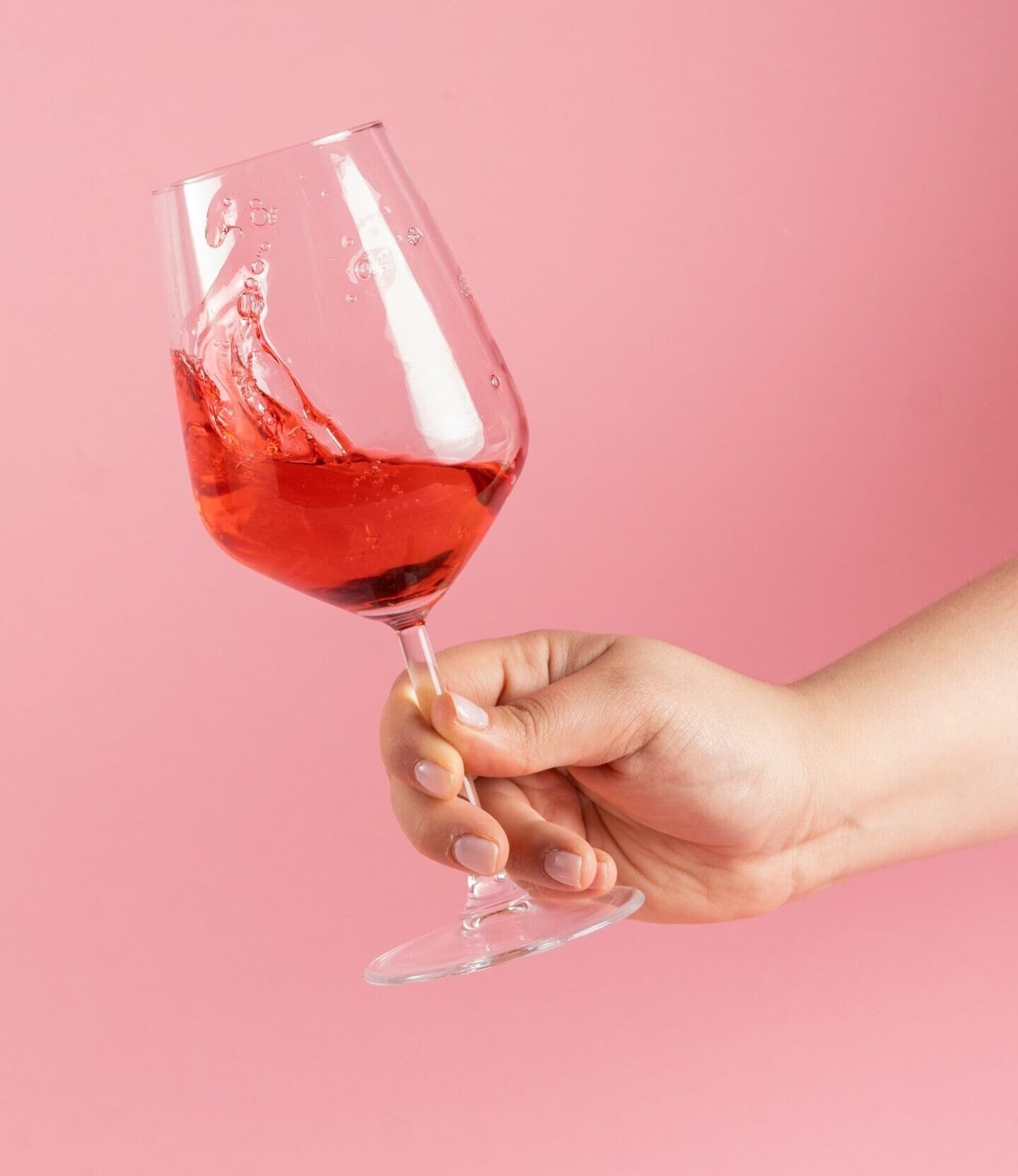This year, National Red Wine Day falls on August 28; did you know that over half of wine drinkers in Canada prefer red wine as their top pick? This means we’re bound to see some tough-to-handle stains! Linley McConnell is a garment care expert (and red wine lover!) who grew up in the dry-cleaning business. As the director of client experience at Gibson’s Cleaners, we asked her to share the best ways to get the potent yet beloved beverage out of linens, jeans, carpets and more! —Vita Daily

Hi Linley! Please tell us a bit about yourself to start.
I’m Linley, the Director of Client Experience at Gibson’s Cleaners in Toronto. Gibson’s is a fourth-generation family business, so stain removal is truly in my blood and I have naturally become an expert on all things garment care. Beyond that, I am a fashion lover and believe in the importance of great garment care when it comes to extending the life of our favourite pieces. After all, the longer our clothes look and feel great, the longer we will feel amazing wearing them.
Over half of wine drinkers in Canada prefer red wine as their top pick; why do you think that is?
If I personally had to pick a favourite variety of wine, I would prefer a white wine, specifically Chardonnay (and not just because it is more stain-friendly). I do wish that I preferred red, though. To me, red wine embodies sophistication and has incredible health benefits. I mean, if you’re going to drink a glass of wine, you may as well get those antioxidants!
As we all know, the problem with red wine is spillage: what are your top tricks for handling red wine stains on different fabrics/surfaces?
When it comes to any stain, we always have to think about the stain’s origin. Wine comes from grapes, and therefore red wine is a plant or ‘tannin’ stain. For example, chocolate, on the other hand, is both a ‘plant’ (sugar and cocoa), oil (butter), AND protein stain (milk). While they might be delicious together, when it comes to stain removal – red wine and chocolate are not a great pairing. Generally, there are some key principles when thinking about stain removal:
- Always act fast. The longer you let a stain set, the more likely it’s going to sink into the fabric or surface
- Always blot, NEVER rub – rubbing can cause abrasion to the fabric. Grab a clean hand towel or clean sponge and blot any excess away.
- Flush with water: Flush the stain with water either by running it under the sink or fully submerging it in a basin. If possible, I prefer flushing or running the stain under the tap because it’s less messy.
- Set your strategy: By this point, the stain should have faded, it’s time to decide if you should take it to a professional or treat it at home. Take silk, wool, or investment pieces to your dry cleaner for the best care.
- Avoid Heat: Heat makes stains set further into the fabric. Do not put your item in the dryer or expose it to a hair dryer in the hopes it will help reduce the spread of the stain.
For red wine stains specifically, there are tons of home remedies and products to help. Whatever you decide, always start small and test your stain remover on a tiny part of the fabric/surface before you go at the stain full-on – there is always a risk a stain removal agent can make dyes run or cause irreversible damage. For clothes, the first step is to grab your white vinegar – acids are great at removing plant-based stains. The vinegar will neutralize the red and purplish pigments. Cover the red wine stain with white vinegar. For more control, you can wet a hand towel or sponge with vinegar and then start to blot the stain away. Once you start to see some of the colour fade, grab your liquid laundry detergent – this will clean the fabric. Do the same over the area with your home laundry detergent. Repeat until the stain is almost gone. Then, clean the item as usual in your washing machine. Make sure to review the stained area before putting your item in the dryer. However, if you’ve spilled on the rug, you are going to use a bit of a different technique. Begin by blotting the excess liquid away. Once you’ve done this, grab some baking soda or table salt, and sprinkle a generous amount on the stained area. This should soak up the stain. Leave it on for 20 minutes to 45 minutes and then vacuum it up. Repeat as necessary until the stain is fully removed. Some people will think of bleach when it comes to red wine stains. As a garment care expert, I am not a huge fan of bleach, and it can be extremely difficult to work with. I really only recommend it to those who are familiar with using bleach when doing laundry, and only if the fabric is white, of course. If using bleach, the stain should disappear once it’s soaked in a bleach solution. Remember to always be safe using bleach and read the directions on the product.
What about prevention? Any tips for that?
If you are clumsy and love red wine, I would avoid buying white furniture, and recommend always having the cleaning products mentioned above on hand in a “Stain Removal Emergency Kit.” Another alternative is drinking red when you’re somewhere you know you can clean it up, like at home, or at family or friends’ homes. That way you aren’t stuck at a restaurant with a worrying stain ruining your evening. Also, I would always recommend having a good dry cleaner in mind for any “too tough to handle” stains.
In honour of National Red Wine Day, coming up, what’s your favourite bottle?
Oh, that’s a tough one. I like “The Prisoner.” It’s definitely on the pricier side, but the perfect gift or addition to an amazing meal.

Be the first to comment